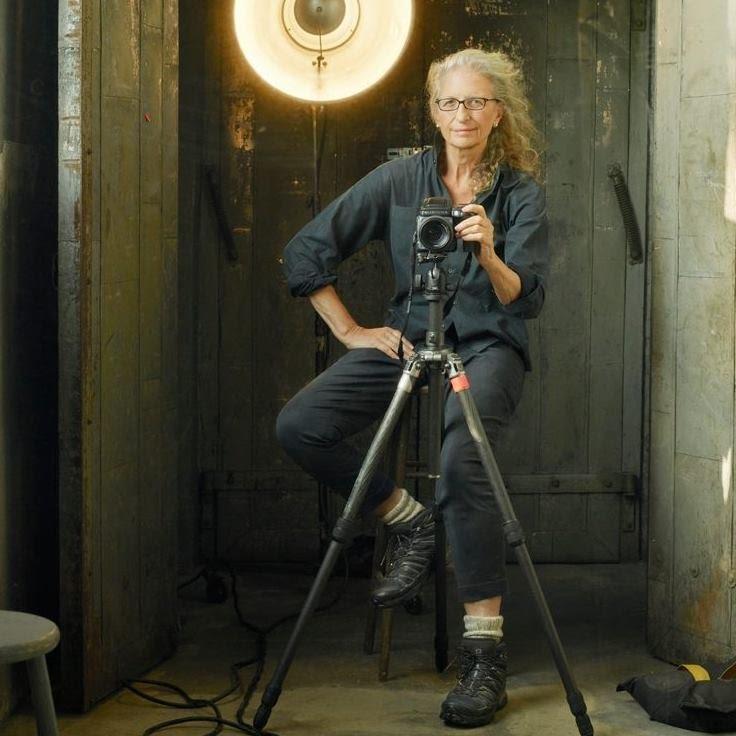Written byMeiling Jin
Edited by CHIQIO
Key words: artworkism, photographer
Annie Leibovitz is one of the most celebrated photographers of our time. Her work has graced the covers of countless magazines and captured some of the most iconic images in modern history. Known for her distinctive style and ability to capture the essence of her subjects, Leibovitz’s photography transcends mere portraiture, becoming powerful pieces of art that tell deep and compelling stories. In this article, we explore Leibovitz’s career, her unique style, and her impact on the world of photography.

Early Life and Career
Born in Waterbury, Connecticut, in 1949, Annie Leibovitz developed an interest in the arts at a young age. Her journey into photography began when she attended the San Francisco Art Institute in the late 1960s, where she initially studied painting. However, it wasn’t long before she picked up a camera and discovered her true calling.
Leibovitz’s early work was deeply influenced by the cultural and political upheavals of the time. In 1970, she joined the staff of Rolling Stone magazine, which proved to be a pivotal moment in her career. Her raw, candid shots of musicians and cultural icons quickly set her apart from her peers. By 1973, she was named the chief photographer of Rolling Stone, a position she held for 10 years.
Distinctive Style and Notable Works
Leibovitz’s style is characterized by its dramatic lighting, bold compositions, and an uncanny ability to capture the personality of her subjects. Her portraits are not just photographs; they are narratives that reveal the deeper truths of those in front of her lens.
One of her most famous works is the 1980 photograph of John Lennon and Yoko Ono, taken just hours before Lennon was tragically killed. The image, which features a naked Lennon curled around a fully clothed Ono, is haunting and intimate, capturing the profound connection between the two.
Another iconic image is her portrait of Whoopi Goldberg submerged in a milk bath. This photograph showcases Leibovitz’s creative approach and her ability to turn a simple concept into a powerful visual statement. The contrast between Goldberg’s dark skin and the white milk is striking and memorable.
Impact and Legacy
Leibovitz’s influence extends far beyond her technical skills. She has pushed the boundaries of portrait photography, turning her images into cultural landmarks. Her work with Vanity Fair and Vogue has produced some of the most recognizable images of celebrities and public figures, often blending elements of fantasy and reality.
Her approach to photography is deeply personal and immersive. She spends time with her subjects, getting to know them, and creating an environment where they can express themselves freely. This method has resulted in portraits that are not just visually stunning but also deeply revealing.
Leibovitz’s 1999 book, “Women,” in collaboration with writer Susan Sontag, is a testament to her ability to capture the strength, beauty, and diversity of women. The book features portraits of women from all walks of life, from celebrities to factory workers, each image telling a unique story.
In 2007, Leibovitz’s retrospective exhibition, “Annie Leibovitz: A Photographer’s Life, 1990–2005,” showcased her personal and professional work, blurring the lines between her public and private life. The exhibition included images of her family, her travels, and her experiences, offering a comprehensive look at her journey as an artist.
Conclusion
Annie Leibovitz has redefined portrait photography through her innovative approach and unwavering dedication to her craft. Her ability to connect with her subjects and capture their true essence has made her one of the most influential photographers of our time. Leibovitz’s work continues to inspire and challenge both photographers and viewers, reminding us of the power of a single image to tell a profound story.
By exploring the world through her lens, Leibovitz has given us a window into the lives of some of the most fascinating people of our era. Her legacy is not just a collection of beautiful photographs but a testament to the transformative power of art.


 No products in the cart.
No products in the cart.